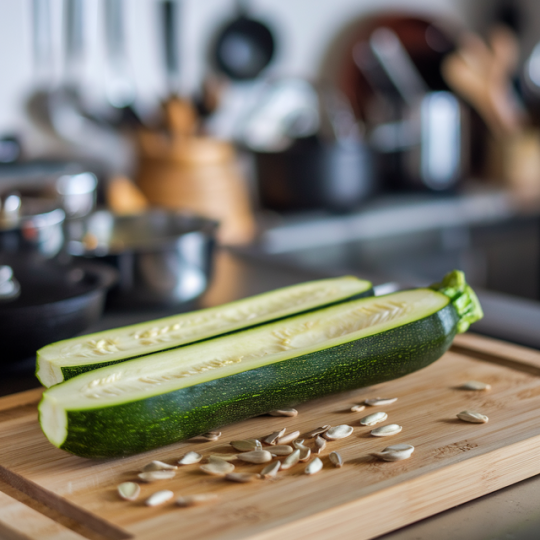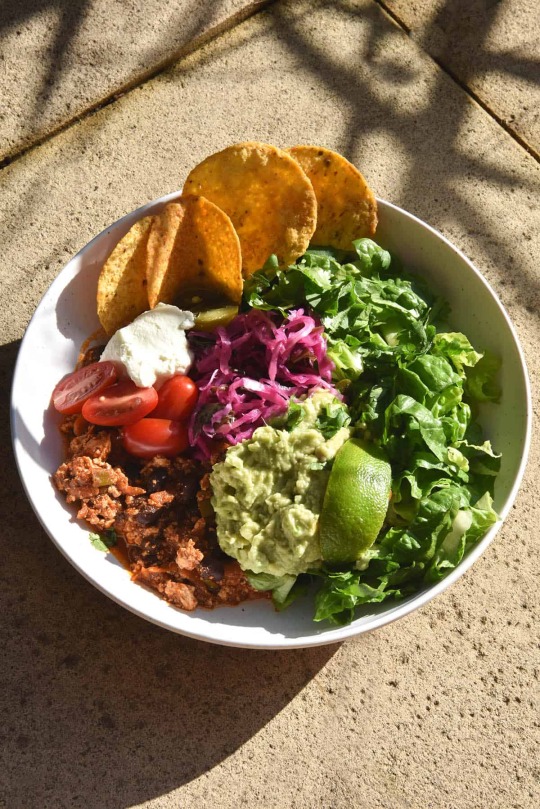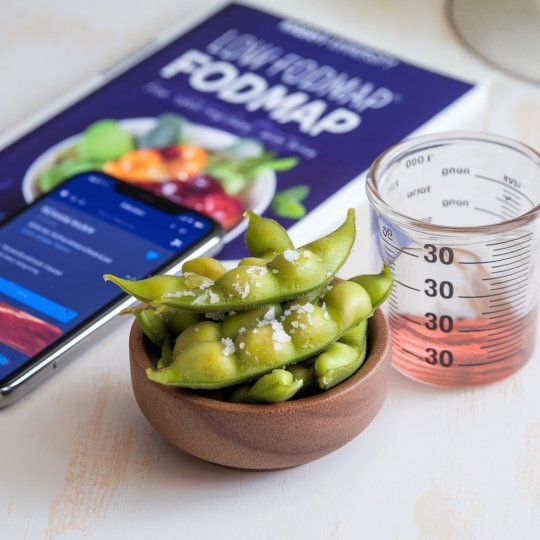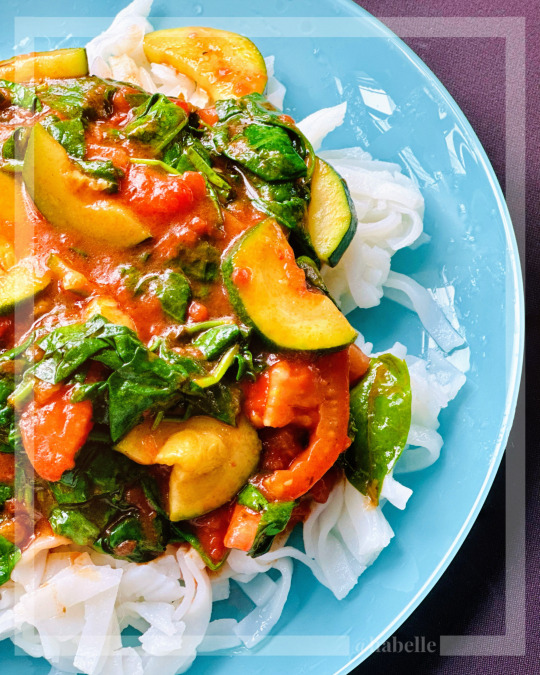#lowfodmap
Explore tagged Tumblr posts
Text

TERIYAKI VEGETABLE STIR-FRY
#Low FODMAP#savoury#teriyaki#stir fry#stir fries#lowfodmap#noodles#dinner#Chinese#Asian food#glutenfree#gluten free#edamame#corn#broccoli#peas#snap peas#Mangetout#nut free#Chinese takeout#recipe#recipes#vegan#food#veganism#vegetarian#plantbased#plant based#Asian cooking#cooking
21 notes
·
View notes
Text

What are FODMAPs? Why should you know about them?
May 11, 2024 Team Supertums
Understanding the intricacies of FODMAPs is paramount in the realm of digestive health, particularly for managing conditions like irritable bowel syndrome (IBS) and improving overall wellness. These fermentable carbohydrates wield considerable influence not only on digestive function but also on the complex ecosystem of the gut microbiome—the diverse community of microorganisms inhabiting the gastrointestinal tract. Research indicates that FODMAPs serve as a primary fuel source for gut bacteria in individuals with IBS. However, the fermentation of these carbohydrates can lead to the production of gases and other metabolites, potentially intensifying symptoms associated with the condition.
What are FODMAPs?
FODMAP is an acronym for a group of short-chain carbohydrates and sugar alcohols the small intestine struggles to absorb efficiently. Once they reach the large intestine, they undergo fermentation by gut bacteria which leads to the production of gas and other by-products. Additionally, FODMAPs have the capacity to draw water into the intestines. This combination of fermentation and water retention often results in symptoms of bloating, gas, abdominal pain, and altered bowel habits for individuals with sensitive digestive systems.

Avoiding FODMAPs
Following a low FODMAP diet and steering clear of trigger foods can alleviate digestive discomfort, ultimately enhancing one's quality of life by eliminating discomfort. However, seeking guidance from a healthcare professional is crucial for tailored advice and treatment. They can provide personalized recommendations and assistance in implementing dietary changes.
It's important to understand that the term "low FODMAP diet" typically refers to the elimination phase, during which high-FODMAP foods are temporarily removed from the diet to assess symptom relief or improvement. Subsequently, these foods are reintroduced systematically under the guidance of a FODMAP-trained dietitian to pinpoint individual food triggers.
This approach allows individuals to reintroduce foods that do not elicit symptoms while restricting those that do. Your dietitian can offer strategies for managing trigger foods, such as consuming smaller portions. Additionally, it's crucial to recognize that the elimination phase should not be followed long-term. Prolonged adherence may result in nutritional deficiencies, as many high FODMAP foods contain beneficial micronutrients and probiotics essential for our bodies. The goal of the diet is to reintegrate as many tolerated high FODMAP foods as possible, not only for convenience and simplifying life but also for dietary diversity and reaping the associated health benefits.
What foods are high in FODMAPs?
Foods to avoid for IBS if you are following the low FODMAP diet include:

Any dietary plan that involves the limitation or avoidance of specific foods should be balanced with healthy alternatives to ensure adequate nutrition.
As we are aware, the low FODMAP diet has the potential to cause deficiencies in essential nutrients if not managed with care. Thus, it's crucial to maintain a well-rounded diet that fulfills your body's nutritional needs.
For instance, many foods high in FODMAPs are rich sources of dietary fiber, which plays a crucial role in promoting digestive health and regular bowel movements. By restricting these foods, there is a risk of insufficient fiber intake, leading to issues such as constipation and gastrointestinal discomfort. Therefore, integrating alternative sources of fiber into your diet is imperative to support digestive health while following the low FODMAP approach.
Fiber can be obtained from a variety of sources, including fruits, vegetables, whole grains, nuts, seeds, legumes, and lentils. With the availability of low FODMAP alternatives for many of these foods, it is feasible to maintain a balanced diet while adhering to the dietary restrictions.

How to eat healthy on the low FODMAP diet ?
Ways to maintain a balanced diet while following the low FODMAP diet include:
Broadening your culinary horizons: Integrate a diverse selection of low-FODMAP fruits, vegetables, grains, proteins, and healthy fats into your meals to ensure adequate nutrient intake.
Opting for substitutes: Select low FODMAP alternatives for high FODMAP foods to satisfy your nutritional requirements. For example, consider incorporating quinoa or rice instead of wheat-based grains.
Monitoring portion sizes: Exercise caution with serving sizes, as the FODMAP content of foods can vary based on quantity. While a food may be low FODMAP in small amounts, consuming a larger portion could elevate its FODMAP levels. Utilize our app to determine the appropriate serving size permitted on the low FODMAP diet by locating the food and utilizing the 'Can I have more?' feature for guidance.
Consulting with a registered dietitian: Collaborate with a registered dietitian who specializes in the low FODMAP diet to develop a personalized plan tailored to your nutritional needs and digestive symptoms.
Conclusion
In summary, understanding the role of FODMAPs in digestive health is crucial for individuals managing conditions like IBS. By adhering to a low FODMAP diet and avoiding trigger foods under the guidance of a FODMAP-trained Dietitian, many individuals can find relief from uncomfortable symptoms and improve their overall well-being. However, it’s important to recognize that the low FODMAP diet is not suitable for everyone and should be used as a diagnostic tool for those with IBS. Maintaining a balanced diet alongside the low FODMAP protocol is vital for preventing nutrient deficiencies and promoting digestive health. By varying meals, controlling portions, seeking guidance from a registered dietitian, and utilizing resources like FODMAP Friendly certified products, educational materials and FODMAP-friendly recipes, individuals can effectively manage symptoms and enhance their quality of life.
For more information and gut heath tips please reach us at www.supertums.com
#LowFODMAP#GutHealth#IBSRelief#Bloating#DigestiveHealth#HealthyEating#FoodForGut#Supertums#GutFriendly#IBSCommunity#FODMAPFriendly#supertums
2 notes
·
View notes
Text

Macaroni & Cheese
(Vegan, Gluten Free, Low FodMap)
2 notes
·
View notes
Text

Struggling with IBS? A Low FODMAP diet might be the key to relief. This evidence-based approach helps identify food triggers and reduce digestive discomfort. From portion control to smart food swaps, start your journey toward better gut health with these essential tips. Always consult a dietitian for personalized guidance.🦠✨ . . . Schedule a consultation: Dr. Hitendra K Garg
📲 8920361841, 8920632657 📲 Follow us: @drhitendragarg Visit: www.drhitendrakgarg.com
#IBSRelief#IrritableBowelSyndrome#GutHealth#DigestiveHealth#IBSManagement#LowFODMAP#LowFODMAPDiet#FODMAPFriendly#IBSDietPlan#StomachHealth#DrHitendraKGarg#GastroenterologistIndia#DigestiveCare#IBSExpert#GutHealing#DelhiDoctor#GastroCare#KnowYourGut#HealthyGutHappyYou
1 note
·
View note
Text
Is Zucchini Low FODMAP? A Gut-Friendly Choice
If you're following a low-FODMAP diet for digestive health, you may wonder: Is zucchini low FODMAP? The good news is, yes! Zucchini is a low-FODMAP vegetable, making it a safe choice for those with IBS or sensitive stomachs.
According to Monash University, a leading authority on FODMAPs, zucchini (also called courgette) is well-tolerated in servings of up to 1 cup (65g). It’s packed with fiber, vitamins, and antioxidants, supporting gut health without triggering bloating or discomfort.
Enjoy zucchini grilled, roasted, or spiralized into zoodles for a digestion-friendly meal!

0 notes
Text

Enjoy delicious and fluffy waffles without triggering your FODMAP sensitivities. These low FODMAP waffles are gluten-free and made with lactose-free ingredients.
Ingredients: 1 cup gluten-free all-purpose flour. 1 tsp baking powder. 1/2 tsp baking soda. 1/4 tsp salt. 2 large eggs. 1/2 cup lactose-free milk. 2 tbsp melted butter or dairy-free alternative. 1 tbsp maple syrup. 1 tsp vanilla extract.
Instructions: Follow the directions that came with your waffle iron to get it hot. Whisk the baking powder, baking soda, salt, and gluten-free all-purpose flour together in a bowl. Step 2: Beat the eggs in a different bowl. Step 3: Add the lactose-free milk, melted butter or a dairy-free alternative, maple syrup, and vanilla extract. Mix everything together well. Add the wet ingredients to the dry ones and mix them together just until they are mixed. Make sure not to mix it too much; a few lumps are fine. If you need to, lightly grease the waffle iron with oil or non-stick spray. Using the amount suggested for your waffle iron, pour the waffle batter onto the waffle iron that has already been heated. Put the lid back on and cook the waffles according to the directions on the box. Usually, this takes three to five minutes, or until they are golden brown and crispy. With care, take the waffles out of the iron and serve them right away with your favorite low-FODMAP toppings, like lactose-free whipped cream, fresh berries, or a drizzle of maple syrup.
Prep Time: 10 minutes
Cook Time: 15 minutes
Bucks Youth
0 notes
Text
Is a Low-FODMAP Diet the Answer for Your Digestive Issues?
If you’ve experienced ongoing digestive issues, you know certain foods can wreak havoc on your gut and cause all sorts of unpleasant symptoms — like chronic stomach pain, gas, bloating, diarrhea, and constipation. It can be hard to pinpoint exactly which foods are making you feel miserable, but researchers have found that an elimination diet called the low-FODMAP diet may help relieve digestive…

View On WordPress
0 notes
Text
Irritable Bowel Syndrome (IBS): Symptoms, Causes, and Management
Irritable Bowel Syndrome (IBS) is a common gastrointestinal disorder that affects the large intestine. While it doesn’t cause structural damage, IBS significantly impacts quality of life due to its uncomfortable symptoms.

Symptoms of IBS
Abdominal pain or cramping, often relieved after a bowel movement.
Bloating and gas.
Alternating episodes of diarrhea and constipation.
Mucus in the stool.
What Causes IBS?
The exact cause of IBS remains unclear, but several factors may contribute:
Gut-Brain Interaction: Abnormalities in communication between the gut and brain.
Food Sensitivities: Trigger foods like dairy, gluten, and fatty foods.
Stress: Emotional stress can exacerbate symptoms.
Gut Microbiota Imbalance: Disruptions in gut bacteria.
Managing IBS
Dietary Adjustments:
Follow a low-FODMAP diet to reduce symptoms.
Identify and avoid trigger foods through an elimination diet.
Lifestyle Changes:
Regular exercise to regulate bowel movements.
Stress management techniques such as yoga or meditation.
Medications:
Fiber supplements or laxatives for constipation.
Anti-diarrheal medications for diarrhea.
Antispasmodics to relieve abdominal cramps.
Probiotics:
Help restore balance in gut bacteria.
When to See a Gastroenterologist
If symptoms persist, worsen, or interfere with daily life, consulting a gastroenterologist is essential for personalized treatment and to rule out other conditions.
#IBSRelief#DigestiveHealth#GastroCare#GutHealthMatters#IBSManagement#HealthyDigestiveSystem#LowFODMAP#BloatingRelief#GastroenterologySupport#IBSHelp
0 notes
Text

A gluten-free quinoa salad that is full of fresh vegetables and a zesty dressing. This recipe is great for a light and healthy meal because it is low in FODMAPs.
Ingredients: 1 cup quinoa. 2 cups water. 1 cup cherry tomatoes, halved. 1/2 cup cucumber, diced. 1/2 cup red bell pepper, diced. 1/4 cup scallions green parts only, chopped. 1/4 cup fresh parsley, chopped. 2 tablespoons olive oil. 2 tablespoons lemon juice. Salt and pepper to taste.
Instructions: Rinse quinoa thoroughly under cold water. In a medium saucepan, combine quinoa and water. Bring to a boil, then reduce heat to low, cover, and simmer for 15 minutes or until quinoa is tender and water is absorbed. Remove from heat and let it cool. In a large bowl, combine cooked quinoa, cherry tomatoes, cucumber, red bell pepper, scallions, and fresh parsley. In a small bowl, whisk together olive oil, lemon juice, salt, and pepper. Drizzle this dressing over the salad and toss to combine. Refrigerate the salad for at least 30 minutes before serving. Enjoy your delicious gluten-free quinoa salad!
Gabriel Marsh
0 notes
Text

Low FODMAP Chilli
#Low FODMAP#chilli#chili#lowfodmap#lunch#dinner#savoury#carrot#carrots#tofu#tomato#tomatoes#black bean#black beans#nut free#gluten free#glutenfree#lettuce#avocado#salad#salads#recipe#recipes#vegan#food#veganism#vegetarian#plantbased#plant based#easy recipes
13 notes
·
View notes
Text
Sleep Your Way to a Happier Gut
Let’s be real — most of us treat sleep like it’s optional. One more episode, one more scroll… and suddenly it’s 2 AM. But guess who hates that late-night chaos? Your gut.
Yep, your digestive system is deeply connected to your sleep cycle. In fact, scientists call this the gut-brain-sleep axis — and it’s real.
Your brain and gut are in constant communication. When you skimp on sleep, your body produces more stress hormones like cortisol. That stress throws your digestion off, leading to bloating, cramps, acid reflux, or even an IBS flare-up.
On the flip side, quality sleep helps regulate your gut microbiome, the trillions of bacteria that keep digestion smooth, inflammation low, and your mood lifted.
Here’s how good sleep helps your gut:
✔️ Helps regulate bowel movements ✔️ Reduces stress-related digestive issues ✔️ Supports a balanced gut microbiome ✔️ Improves absorption of nutrients ✔️ May reduce the severity of IBS symptoms
Tips for better gut-sleep harmony:
🌿 Set a consistent bedtime (yes, even on weekends!) 🧘 Unwind tech-free — swap doomscrolling for deep breaths 🥣 Eat gut-friendly foods (like Supertums oats 🌀) at dinner — not too close to bedtime 💧 Stay hydrated — but stop chugging water an hour before you sleep 😌 Try a probiotic or magnesium if digestion feels off
Your gut isn’t just what you eat — it’s also how you rest. So if you’re chasing digestive calm, start with your pillow. Read more such insights on www.supertums.com

#supertums#guthealth#healthyliving#healthygut#microbiome#digestion#digestivewellness#digestivehealth#bloatingrelief#sleepbetter#rest#mindgutconnection#lowfodmap#tummy
0 notes
Photo

Low FODMAP & Gluten free Recipe - Frosted zucchini & Lemon Cake Discover a delectable combination of flavors with our respectful recipe for Frosted Zucchini & Lemon Cake. Dive into a world of gluten-free decadence that won't compromise your FODMAP diet.
0 notes
Text
❣ | Okay! |

My inbox is done! That means I'm going to go ahead and start moving. So, my plan is to go through my notes and followers list and inquire about threads people would like to keep; however, I am a disaster and this took way longer to get to than I'd planned. It's been a Minute™, so I absolutely understand if you don't want to keep anything ongoing - we can always start something new !
That being said, if you already know you want to hold onto something from here could you please like this post to help me remember to send you a message ?
Much Love
♡ Ro
#❣ | operation botched :: ooc |#important psa#| moving time moving time I'm really stoked to restart actually#my health has been a little better#only trade off is my diet is now lowFODMAP with additional restrictions |
4 notes
·
View notes
Text
Edamame and FODMAP: A Low-FODMAP Snack Option?
Edamame, young soybeans, are a popular plant-based protein source, but are they suitable for a low-FODMAP diet? For those with IBS (Irritable Bowel Syndrome) or digestive sensitivities, understanding edamame FODMAP content is essential.
According to Monash University, a 30-gram (1 oz) serving of edamame is considered low-FODMAP, making it a safe choice in moderation. However, larger portions may contain higher levels of galacto-oligosaccharides (GOS), a high-FODMAP carbohydrate that can trigger bloating and discomfort.
If you're following a low-FODMAP diet, enjoy edamame in small amounts. Pair it with other gut-friendly foods for a balanced, digestion-friendly snack!

#Edamame#FODMAP#LowFODMAP#IBS#DigestiveHealth#GutHealth#PlantBasedProtein#MonashUniversity#HealthySnacks
0 notes
Text

You’re invited to enjoy this gluten-free pasta with Banh Pho, tomato sauce, spinach, zucchini and tomatoes 🍅🌿
#Foodie #EasyRecipes #LowFodmap #IBSrecipes #QuickMeals #DinnerIdeas #HomemadeFood #Glutenfree #Vegan #Vegetarian #HomeCooking #SelfCare #RecipeOfTheDay #FoodOfBluesky
2 notes
·
View notes
Text

You’re invited to enjoy this gluten-free pasta with Banh Pho, tomato sauce, spinach, zucchini and tomatoes 🍅🌿
#Foodie #EasyRecipes #LowFodmap #IBSrecipes #QuickMeals #DinnerIdeas #HomemadeFood #Glutenfree #Vegan #Vegetarian #HomeCooking #SelfCare #RecipeOfTheDay
0 notes